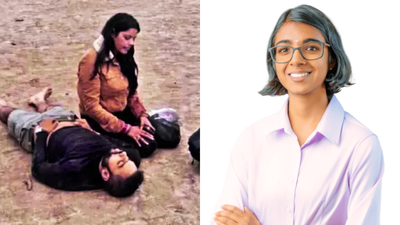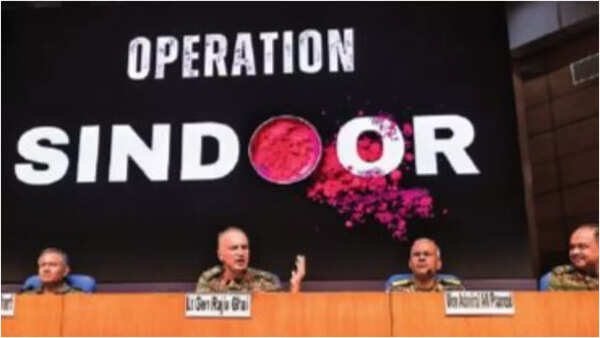
A compelling opinion piece by Stanford University PhD candidate Samyukta Shrivatsa is drawing widespread attention for its clear rebuttal of misinformation surrounding the April 22 terror attack in Pahalgam, Jammu and Kashmir, and India’s subsequent response, Operation Sindoor.The attack took place in the Baisaran Valley, a popular tourist spot, where armed terrorists reportedly singled out Hindu civilians by questioning them about their religious identity. Witnesses say the attackers used methods reminiscent of ISIS, forcing victims to recite religious texts or prove circumcision status. Twenty-six people were killed. The Resistance Front, an offshoot of the Pakistan-based Lashkar-e-Taiba, claimed responsibility.Shrivatsa, currently pursuing her PhD in environmental engineering at Stanford University, is co-president of the Stanford India Policy and Economics Clubs. Her academic work focuses on environmental justice, emergency preparedness, and disaster response, particularly for at-risk populations such as the unhoused, low-income communities, and racial minorities. Her ongoing research explores the intersection of data science, traditional ecological knowledge, and participatory policy design to develop more equitable water and disaster management systems.
Originally from Bengaluru, India, Shrivatsa’s work is informed by her upbringing and lived experiences. As a first-generation immigrant in the United States and someone living with invisible disabilities, she brings a deeply personal and justice-oriented perspective to her scholarship and public engagement. She describes herself as committed to co-creating knowledge with communities and integrating indigenous wisdom with technical tools.Citing her belief in Vasudhaiva Kutumbakam—the world is one family—Shrivatsa penned the viral essay in response to what she described as “dangerous distortions” of the Pahalgam terror attack. She rejected attempts to draw false equivalencies with the Gaza conflict or frame the killings as an act of resistance. “Peace can never be built on misinformation,” she wrote.Her article systematically dismantles four widely circulated myths: that the attackers were freedom fighters; that Pakistan was uninvolved; that India is targeting civilians; and that Kashmir remains colonised.

The armed forces' press conference on Operation in New Delhi on Sunday
Among the victims named were Lieutenant Vinay Narwal, a Navy officer on honeymoon, and Syed Adil Hussain Shah, a local who died protecting others. Shrivatsa pointed to Pakistan’s long record of support for cross-border terrorism, referencing public acknowledgements by Pakistani leaders and photographic evidence of state honours being accorded to slain terrorists.She also criticised Pakistan’s actions following India’s May 7 retaliatory strikes, including the alleged use of civilian aircraft as human shields and shelling of populated areas such as Poonch.
India, by contrast, has described its strikes as “precise and non-escalatory,” targeting only terror infrastructure.The article also revisits Kashmir’s post-1947 history, tracing the region’s accession to India and the exodus of over 350,000 Kashmiri Pandits during the insurgency of the late 1980s and 1990s. “India is home to the third-largest Muslim population in the world,” she wrote, contrasting this with Pakistan’s drastically declining non-Muslim population.“The tragic events in Pahalgam and Pakistan’s role in the war were not acts of political rebellion,” Shrivatsa concluded. “They were acts of religious extremism and terrorism. Peace demands truth — not selective narratives — and the courage to call violence what it is.”Though no official institutional comment has been made, the piece continues to circulate widely in academic, diaspora, and diplomatic circles, with many praising its clarity, compassion, and refusal to indulge in ideological relativism. Shrivatsa’s voice—rooted in both rigorous scholarship and lived experience—has become one of the most compelling to emerge in the international discourse on India, Pakistan and, Kashmir in recent years.

 3 hours ago
31
3 hours ago
31




























 English (US)
English (US)